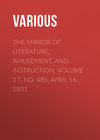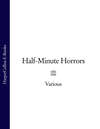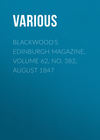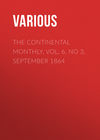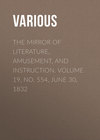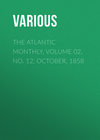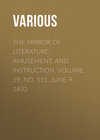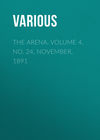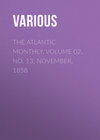Loe raamatut: «The Mirror of Literature, Amusement, and Instruction. Volume 17, No. 485, April 16, 1831», lehekülg 4
FINE ARTS
PANORAMA OF HOBART TOWN
Mr. R. Burford, the most successful panorama painter of his day, has lately completed a View of Hobart Town, Van Dieman’s Land, and the surrounding country, which he is now exhibiting in the Strand. It is not, perhaps, the most striking picture this ingenious artist has produced, yet it is certainly one of the most interesting. The embellishments of books of travels, the sketches of tourists, and the extravagant annual prints, have familiarized the stay-at-home reader with almost every city on the European continent; but a view in Van Dieman’s Land is much more of a novelty. It is comparatively a terra incognita, about which every one must feel some curiosity, though more rationally expressed than that of a King of Persia, who asked what sort of a place America was—“underground, or how?” For the purpose of giving a general idea of a country, a panoramic painting is well adapted: the size of the objects is at once natural, there is no straining of eyes to make them out, and the effect of the whole scene is that of being dropped in the midst of the country, and its surface at once spread before us.
Of Hobart Town we quote a brief description from Mr. Burford’s pamphlet, or key to the picture:—
“The capital and seat of government of Van Dieman’s Land, or Tasmania, is delightfully situated at the head of Sullivan’s Cove, on the south-east side of the river Derwent, about twelve miles from its mouth. The town is built on two small hills and the intermediate valley, the whole gently sloping towards the harbour from the foot of Mount Wellington—a rock which suddenly rears its snow-clad summit to the height of 4,000 feet. Through the centre of the town a rapid stream takes its course, giving motion to several mills, and affording a constant supply of most excellent water for all domestic purposes, as well as increasing the salubrity and beauty of the neighbourhood. From the summit of one of these hills, the present panorama was taken, which, although it does not include the buildings in the lowest part of the valley, exhibits every object particularly deserving notice, as well as the broad expanse of the Derwent, covered with ships, boats, &c. Beyond the town, and on the opposite side of the river, the eye ranges over a vast extent of country, richly variegated and diversified by gently rising hills, broad and verdant slopes, farms, and pasture lands, in the highest state of cultivation, presenting the most agreeable scenes, replete with the useful product of a rich soil and fine climate; the whole bounded by lofty mountains, clothed with rich and almost impervious forests of evergreens, occasionally intermixed with high and nearly perpendicular rocks, whose summits are, for a great part of the year, covered with snow;—the whole forming one of the most agreeable, picturesque, and romantic scenes that can be conceived.
“Van Dieman’s Land is, from north to south, one hundred and sixty miles in length; and from east to west, one hundred and forty-five miles in width; being separated from the main land by Bass’s Straits, which are nearly one hundred miles across. The whole island, which is, almost without exception, of the most fertile and beautiful description, is divided into two counties—Buckingham and Cornwall—of which Hobart Town and Dalrymple are the capitals: the distance between them is one hundred and twenty miles.
“Hobart Town contains at present, upwards of one thousand houses, and has a resident population exceeding seven thousand persons. The town is well planned, and the streets, which intersect each other at right angles, are wide, the law compelling persons who build to leave at least sixty feet in width for carriage and foot ways: they are Macadamized, and are, as well as the numerous bridges over the stream, kept in excellent condition by the chain gangs. The houses are generally built at a short distance from each other, and are partly surrounded with gardens, which, with a very little attention, not always bestowed, become very ornamented and useful, producing, not only the many beautiful trees and shrubs of the country, but every fruit, flower, and vegetable, common in England. The houses are generally of two, sometimes of three, stories in height, well built of brick or stone, and covered with shingles of the peppermint tree; some few are still only weather boarded. The bricks are of a good and durable quality, and the free-stone of a very beautiful description, but exceedingly dear. Many buildings are formed of rough hewn stone, stuccoed with a good white cement, which keeps very clean. Macquarrie-street, running in a straight line from the Pier, contains many very handsome public buildings and private houses, being the residences of the principal settlers, merchants, &c. Rents are in general very high;—a small house of four rooms and a kitchen, will let for sixty or eighty pounds per annum; and a large one, adapted for a store, will obtain from two to three hundred. It cannot be expected at this early period, that the public buildings should display much architectural ornament; it is sufficient that they are large, substantially built, and well adapted for the several purposes for which they were erected.—Besides the church, there is a Scotch church, a neat stone building, near the barracks; a Wesleyan meeting, a stuccoed building in Bathurst-street; and a small Catholic chapel in Patrick-street. There are several excellent academies, and a seminary for young ladies, where first-rate accomplishments are taught, and every possible care taken of the health and morals of their pupils, by Mrs. Midwood and Miss Shartland; there are also day charity schools, on the Lancastrian system, for the children of convicts, labourers, &c. The boarding houses and hotels are well conducted and comfortable; at the latter, every accommodation to be found in one of the best English inns may be had, but at a truly English price; the low public houses and the grog shops are of the vilest description. An active and vigilant police has been recently reorganised, under the superintendence of two officers from England, whose exertions are already attended with the most beneficial results.
“The climate is most salubrious, the mean temperature being 60 deg. Fahrenheit; the extremes, 36 deg. 80 deg. The spring usually commences in September; the summer in December; the autumn in April; and the winter, seven weeks of which is very severe, in June.”
The Panorama is well executed throughout, and in parts, with much delicacy and finish. The distant country, bays, and points, are for the most part delightfully painted. Here and there are spots which almost remind us of Virgil’s
--locos loetos, et amoena vireta,
Fortunatorum nemorum, sedesque beatas:
and, without any view to a transportable offence, a man might well wish to settle himself here “for life.”
Mr. Burford’s “Descriptions” are perhaps better drawn up than those of exhibitions in general. In the Keyplate before us, fifty-two points or objects are denoted, and further illustrated by half-a-dozen pages of letter-press.—In the town are seen the barracks; the governor’s, commissary’s, and judges’ residences; hotel, jail, lime-kilns, church, court-house, bank, hospital, treasury, pier, &c., and Mrs. Midwood’s seminary. Groups of convicts enliven the picture—we had almost said enlighten it, from recollection of the picking propensities to which hundreds of them are indebted for their abode here. They are deplorable specimens of fallen nature—such as may be seen in droves slinking to their work in the dock-yard at Portsmouth, or elsewhere, and still bearing the front of humanity in their begrimed features, but harrowing the spectator with painful recollections of their moral abandonment. One of the groups is a chain gang at work—breaking stones for the road—or, a last effort at self-improvement, by mending the ways of others. How different would these worthies appear in a rabble rout at a London fire, or in all the sleekness of civilization, as exhibited in the sundry avocations of picking a pocket, in easing a country gentleman of his uncrumpled or bright dividend, or studying our ease and comfort by helping themselves to all our houses contain without the rudeness of disturbing our slumbers. A neighbouring group of natives, though less sightly than these fallen sons of civilization, in a moral point of view, would be a happy contrast, could we but look into the hearts of both parties, and see what is passing therein.
But we are moralizing, and this may not be the most showy inducement for the reader to visit Mr. Burford’s Panorama, and admire its pictorial beauties. Let him do so; and before he leaves the place, turn about, and think for himself, and be assured there is good in every thing.
